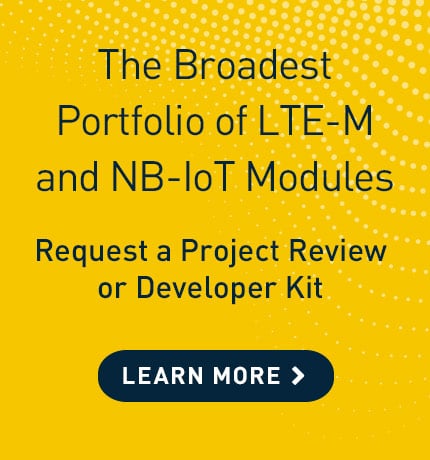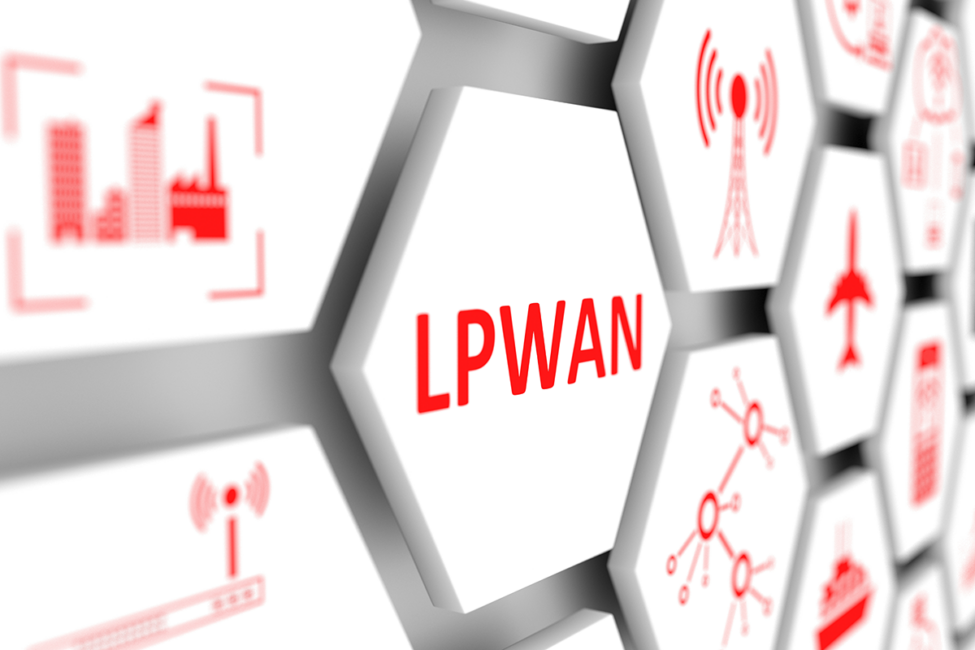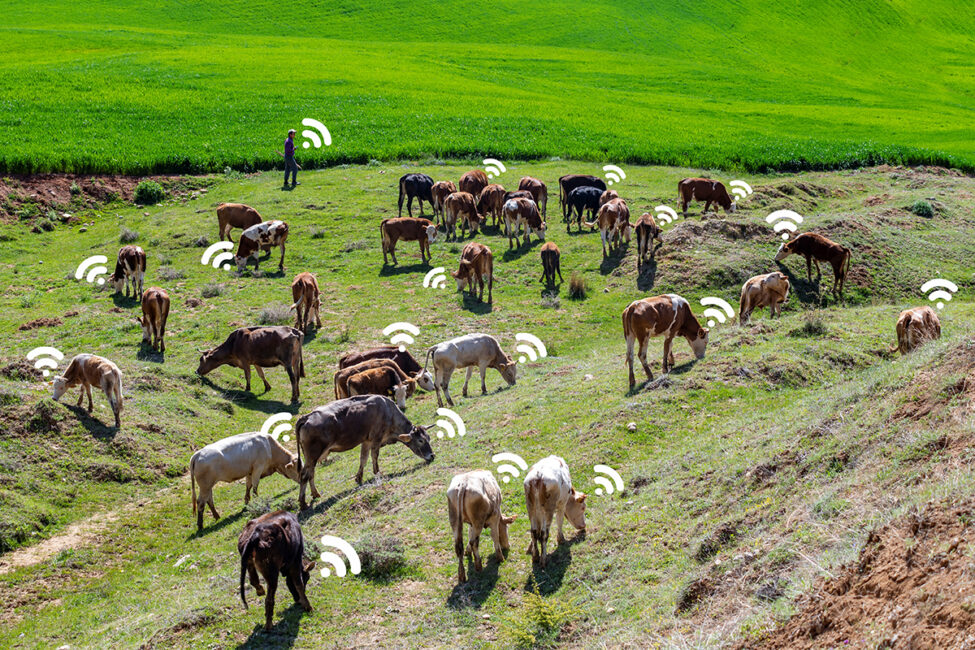
A cellular low-power wide-area network (LPWAN) is a data network that utilizes a specific class of wireless technologies. Cellular LPWAN is one such class. It allows for long-range communications at low bit rates for devices connected to the cellular network via low-power standards.
A key driver of the Internet of Things (IoT), the term “cellular LPWA” defines cellular standard categories conceived to support machine-to-machine (M2M) and IoT devices.
These devices require less operational speed and bandwidth than consumer cellular devices. Still, they need the ubiquity of traditional cellular LTE networks and the simplicity of short-range technologies like Wi-Fi or Bluetooth®.
Cellular LPWA technologies operate with low power consumption and provide wide-area wireless connectivity. As a result, cellular LPWA became the preferred choice for IoT applications in 2016. That year, the 3rd Generation Partnership Project (3GPP), the global cellular standardization body, defined cellular LPWA standards.
These standards would help mobile network operators (MNOs) meet the IoT application costs, coverage and power consumption needs.
4 Characteristics of Cellular LPWAN

Battery Life
Cellular LPWAN allows engineers to design low-power and wearable devices for maximum battery life by optimizing sleep cycles based on criteria that includes:
- Time of day
- Business hours
- Seasons
When coupled with sound design practices, the battery life for cellular LPWAN-connected devices can extend to 10 or more years.
High Security
While cellular LPWA technologies offer different levels of security, most include:
- Subscriber or device authentication
- Identity protection
- Network authentication
- Message confidentiality and key provisioning
Denser Device Network Support
Cellular LPWAN supports greater numbers of connected devices than unlicensed spectrum LPWAN and over wider areas.
Smaller Data Transfer Packets

Cellular LPWAN enables data transfers in small intermittent data packets. These packets range in size typically from 10 to 1000 bytes, making cellular LPWAN ideal for several industry applications, including:
- Smart utilities
- Smart cities
- Connected health care
- Smart homes and buildings
- Smart farming
- Telematics
- Asset tracking
Overcoming Former Obstacles to Widespread Cellular LPWAN Adoption
Cellular IoT was once too expensive, power-hungry and impractical for many applications. However, in 2016, 3GPP introduced new standards and technologies in Release (Rel) 13: LTE-M and narrowband IoT (NB-IoT).
Cellular modules in these standards enabled companies to build products at the right cost and size for large-scale IoT rollouts. Rel 14 further improved those standards and technologies, making cellular LPWAN solutions more affordable and feature-rich.
Overcome IoT Adoption Challenges with Cellular LPWAN
IoT has diverse needs, from high speeds for video applications to low speeds for sensors. They range from low latency for voice communications and control systems to large capacity for dense deployments. The biggest requirement for transactional device classes is lower power consumption and longer battery life, which is what LPWAN offers.
Cellular LPWAN solutions overcome three former obstacles to widespread adoption:
- Cellular connection modules and associated data plans are now more affordable
- Coverage is widely available, even indoor and in remote areas
- Battery life lasts a decade if the design is done right
Explore Our Cellular LPWA Module Portfolio
As IoT pioneers, we offer the industry’s broadest and most regulator- and carrier-certified portfolio of 3GPP Rel 13 and 14 cellular LPWA modules. Our LTE-M and NB-IoT modules deliver exceptional deployment results. They provide industry-leading radio frequency performance and meticulously executed critical features like:
- Extended Discontinuous Reception (eDRX)
- Power Saving Mode (PSM)
These capabilities are critical for low-power operations. They allow the module to remain in ultralow current power-saving mode and wake up periodically to exchange data with the network. Then it goes back to sleep to save battery life through duty-cycle efficiency.
Speak with our cellular LPWAN IoT experts and request a project review or developer kit.
Request a Developer Kit
